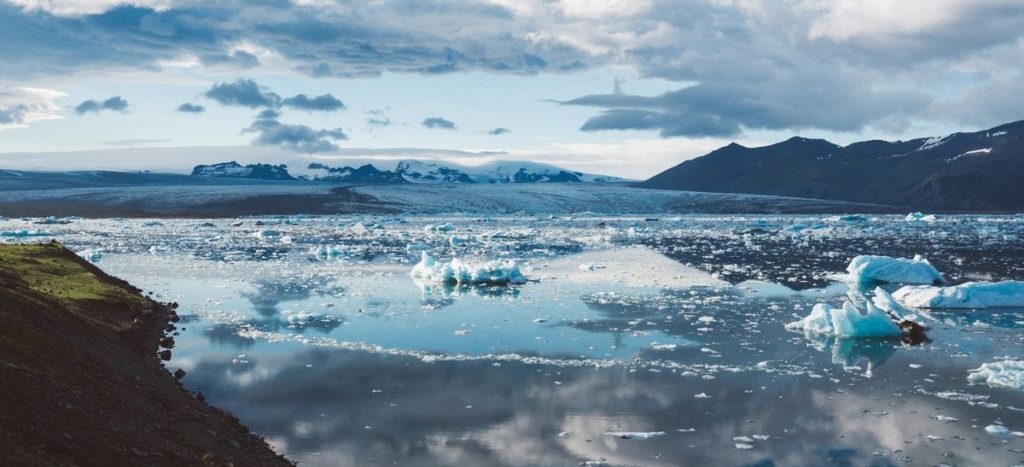Please welcome Nathan Schaper, a devoted volunteer of Sustainable Hamilton Burlington and Sustainability Leadership, who is our guest blogger for this month’s post on climate change adaptation.
Climate change will affect you and your business personally. John Holdren, the assistant to the President (President Obama) of Science and Technology at the time sums it up succinctly in this quote: “We basically have three choices: mitigation, adaptation and suffering. We’re going to do some of each. The question is what the mix is going to be. The more mitigation we do, the less adaptation will be required and the less suffering there will be.” These three choices will only become more obvious as suffering becomes more common due to increasing extreme weather events.
- Mitigation: reducing GHGs that warm the atmosphere.
- Adaptation: making the necessary changes to prepare for different future conditions.
- Suffering: Extreme temperatures, increasing disasters, sea level rise, etc.

Many small businesses understand climate change mitigation well. There is one easily definable goal in mitigation, (to reduce emitted greenhouse gasses) and mitigation strategies are generally well defined, just difficult. Unfortunately, mitigation efforts are failing across the globe, with almost all countries and many businesses falling short of their climate targets. Therefore, adaptation is necessary to prepare for extreme weather and chronic stress on natural systems to eliminate suffering. However, adaptation is much more difficult to understand and plan for.
Climate adaptation begins with 2 simple facts: Canada is warming at twice the rate of most other countries and extreme events are becoming increasingly more common with increasing temperatures. Furthermore, adaptation is more than resilience, where resilience can be defined as the ability to survive when subjected to climate change, adaptation is the changing and evolving of business, products, services or clients to keep up with the ever-changing climate conditions and prospering through it. Adaptation requires a shift in thinking of considering projected climate changes rather than historical weather trends. Adaptation looks like ski resorts in the Swiss Alps investing in spas and other non-ski attractions to continue to lure tourists as the annual snowpack decreases due to climate change, Maersk shipping companies making ports more resilient to withstand rising seas or Bloomberg relocating a key data centre out of Manhattan to protect its equipment against flooding.
Was Texas adequately adapted to extreme temperatures in February? Was Fort McMurray adapted to fires in 2016? Or the floods in 2020? While these are extreme events for past climate patterns, they will increasingly become the normal for future climate patterns. Climate change affects every province and territory and will affect you and your business in Canada. However, in most cases it is likely to result in slow changes like rising heat or shifting rainfall throughout the year that are not easily noticeable from day-to-day or sudden events like natural disasters which are extreme only while the event is happening. Canada is already seeing many of the following changes:
- Yukon: Drastic wildlife changes resulting in new species inhabiting new areas and other species struggling, resulting in likely mass extinctions.
- Northwest Territories: Permafrost melting resulting in collapsing and shifting landscapes can be damaging to infrastructure.
- Nunavut: May not have reliable ice cover in winter anymore resulting in changes in lives and more difficult transportation, especially for traditional cultures which often rely on the ice cover for their livelihoods.
- Manitoba: Altered agriculture patterns increasing strife on crops. Crop failure due to monocultures and pests wiping out entire crop species.
- Saskatchewan: Likely to see serious water shortages due to more frequent and intense summer droughts, depleting aquifers and reducing crop yields.
- Alberta: Likely to see significant move away from fossil fuels resulting in massive job and economic losses.
- British Columbia: Likely to see many more fires and which pose an imminent threat to many communities.
- Ontario: Could see winter ice-free great lakes over this decade & increased risks of flooding because of more intense, increasing rain.
- Quebec: Increasing spread of Lyme disease due to warmer temperatures which increase the spread of ticks and other disease carrying insects.
- Newfoundland and Labrador: Ocean acidification resulting in dramatic reduction of fish stocks producing difficult livelihoods for fisher people.
- Nova Scotia: Increased risk of extreme weather from hurricanes and other disasters.
- New Brunswick: Sea level rise effecting and destroying many costal communities.
- Prince Edward Island: Health effects of heat waves, resulting in smog, respiratory illnesses, and heatstroke.
According to the Clean Air Partnership’s Climate Change Impacts in Toronto report, Toronto (for example) will likely see significant impacts to many sectors:
- Water: Water demand in the summer will be in high demand and in winter may cause substantial flooding.
- Health: increasing heat will increase smog and vector-borne disease.
- Energy: Transmission lines are at risk of storms, and generation capacity is at risk from warmer temperatures
- Transportation: Transit operations are vulnerable to blackouts and shipping activity will face significant costs if water level drops due to prolonged droughts.
- Buildings: Susceptible to storms, flooding and increasing wind intensity.
- Urban ecosystem: increasing stress on urban forests, and increasingly invasive species inhabiting wetlands.
- Socio-economic: Adaptation is difficult for low-income households, who are usually the most at risk in the first place.
- Tourism and recreation: Low lake levels, poor air quality or threat of disease can all potentially reduce tourism in the city.
- Economy: Blackouts and extreme weather will disrupt the economy and increase the cost of doing business.
The Carbon Disclosure Project (CDP), a leading global framework on climate disclosures identified 6 key lessons for companies to adapt to climate change:
- Companies are identifying significant risks but need to expand their analysis.
- The biggest companies report major financial implications.
- The opportunities are bigger than the risks.
- Differences are striking across countries and regions.
- The opportunities far outweigh the costs of adaptation plans.
- Companies and investors need to learn lessons from the power sector.
The CDP further reported that “225 of the world’s 500 biggest companies reported climate-related opportunities represented potential financial impacts totalling over US$2.1 trillion dollars. The majority of this impact is driven by the potential increase in revenue due to demand for low emissions products and services, as well as the potential for a better competitive position against shifting consumer preferences.” Further still, 53% of companies reporting to CDP identify inherent climate-related risks with the potential to have a substantive financial or strategic impact on their business, especially in the transition to a green future. Some of those identified risks and opportunities are:
Transitional Risks.
- Policy and legal: Increased pricing of GHG emissions (nearly half the companies – 1123 companies).
- Policy and legal: Mandates and regulation of existing products and services (792 companies).
- Policy and legal: Enhanced emissions-reporting obligations (645 companies).
- Market: Changing customer behavior (627 companies).
Physical Risks.
- The increased severity of extreme weather risks.
- Changes to precipitation and weather patterns.
- Rising mean temperatures.
Opportunities.
- Increased revenue through demand for low emissions products and services – US$970 billion.
- Better competitive position to reflect shifting consumer preferences – US$487 billion.
- Increased revenue through new solutions to adaptation needs – US$236 billion.
- Increased capital availability (as more investors favour low-emissions producers) – US$198 billio

Figure [1]: Global Commission on Adaption, Adapt Now report.
Adaptation starts with identifying risks and opportunities and having a well thought out plan to address them. The TCFD framework is the leading framework for climate adaptation and the risks and opportunities involved and it is poised to lead adaptation disclosures into the future. It is key is to consider climate in long-term planning and decisions resulting in assessing the risks and opportunities available for your company. The best way to start is to review climate related risks and opportunities for your business. Furthermore, it has been proven time and time again that taking action to remain ahead of the curve is always cheaper than dealing with crises as they arise. Adaptation can provide a triple dividend: avoiding economic losses through reducing risk, capitalizing on positive gains by searching out new opportunities and increasing innovation, and delivering on additional social and environmental benefits according to the Global Commission on Adaption, Adapt Now report. Investors are now looking for more forward-looking metrics such as adaptation strategies instead of backwards looking metrics such as historical data and trends. Furthermore, climate is not just one extra risk to manage, but a systemic risk that increases other risks. Business as usual is going to change whether you like it or not, it is how you take action that counts.


